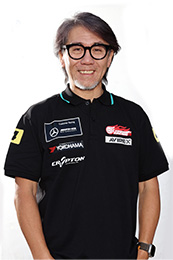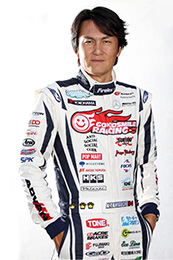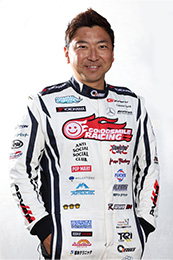GOODSMILE RACING & TeamUKYO RACE REPORT 1
2024 AUTOBACS SUPER GT Round1 OKAYAMA GT 300km RACE
The 2024 SUPER GT season features eight races, starting with the opening round at Okayama International Circuit. GOODSMILE RACING & TeamUKYO continues with the same structure as last season, led by Aki Takanori, with Ukyo Katayama as the team manager and drivers Nobuteru Taniguchi and Tatsuya Kataoka. The team uses Yokohama tires, the Mercedes-AMG GT3 car remains unchanged, but a new model has been introduced this season.
For the 2024 GT300 class this season, three new car models have been added, bringing the total to 15 models and 27 entries. In SUPER GT, which features various competing models, adjustments are made to vehicle weight and engine power through Balance of Performance (BoP) measures to ensure as equal conditions as possible for racing. Additionally, as part of the “2024 Safety Improvement Measures” for the GT300 class, a “weight addition for speed restriction measures” has been implemented to reduce cornering speeds. The total vehicle weight is now determined by the formula: minimum weight + BoP weight + additional weight.
As a result, the Mercedes-AMG GT3 has been subjected to an additional weight of 39 kg, making its total weight for the opening round 1285 + 45 + 39 kg, which equals 1369 kg. This is 49 kg heavier than the total weight of 1320 kg at last year’s opening round.
Additionally, one of the characteristics of SUPER GT is the success weight (SW) that is applied based on performance in each race. Until last season, the SW was calculated as “points earned × 3 kg,” with a maximum of 100 kg allowed. However, this season, due to the addition of the “weight for speed restriction measures,” the SW has been reduced back to “points earned × 2 kg,” with a maximum weight limit of 80 kg.
Additionally, the competition regulations have seen many changes, including the mandatory use of the designated fuel “GTA R50,” which contains 50% carbon-neutral fuel (CNF), and the reduction of the number of tire sets brought in by one set (from 5 to 4 sets for this 300 km race).
April 13th [Official Practice, Official Qualifying]
Weather: Sunny
Course: Dry
Temperature / Track Surface Temperature:
Before Q1: 27°C / 36°C
During Q2: 27°C / 35°C
At 9:30 AM, under a clear blue sky befitting the name “Sunny Okayama,” the #4 Good Smile Hatsune Miku AMG took to the track, driven by Kataoka.
With temperatures of 20°C and track temperatures of 26°C—markedly different from the cooler official tests a month earlier at the same circuit—the car faced unexpectedly high temperatures. This seemed to work against them as the “setup brought didn’t work at all (Kataoka).” Car #4 repeatedly pitted after a few laps, adjusting settings right from the start of the session. Despite challenges in fine-tuning the setup, they took advice from a new AMG performance engineer who joined during this race week. Kataoka reflected, “It felt like we were grasping at straws while being uncertain about the direction (laughs),” but kept making adjustments. In the end, Kataoka improved his lap time on the 28th lap with a 1:27.405, then further to 1:27.399 on the 29th, showing signs of progress.
During the GT300 exclusive practice starting at 10:55 a.m., Taniguchi took the wheel, recording times in the 1:28 range and finishing the session with a 1:28.137 on the final lap.
In the subsequent 15-minute FCY (Full Course Yellow) test session, further adjustments were made, leading to a sense of confidence for the afternoon’s qualifying, with Kataoka expressing, “If we push just one more step in that direction, we might be able to pull it off.”
This season, the qualifying format has changed from the traditional knockout style to a “combined time method” for Q1 and Q2. For the season opener, the field was divided into Group A and Group B based on last year’s rankings. After the Q1 sessions for each group, the top 8 cars from each were combined into the “Upper 16” group, while the remaining were sorted into the “Lower 17” group for Q2. The starting grid for the final race is determined by the combined times of Q1 and Q2. However, the lower four cars of the “Upper 16” and the top four of the “Lower 17” could be swapped based on their combined times. While the rules are complex, they potentially favor car #4, given Taniguchi and Kataoka’s strong driving skills.
The conditions were warm, with an air temperature of 26°C and a track temperature of 36°C, making for an unusually hot start to the season in April.
Car #4, which finished last season ranked 14th, was placed in Group B. At 2:18 p.m., Kataoka took the car onto the track for Q1, maintaining a position within the top ranks from the warm-up. On his fourth timed lap, he clocked a 1:26.824, placing 5th when crossing the control line. Despite other cars improving their times and briefly dropping to 10th, Kataoka improved again with a 1:26.569 on the following lap, securing 7th place in the “Upper 16” and passing the baton to Taniguchi.
Following the GT500 Q1 and the GT300 Lower 17’s attack, the Q2 Upper 16 attack for pole position began at 3:10 PM. Under the new rules, all cars are required to use the same tires they used in Q1 for Q2, so driver Taniguchi, who was responsible for Q2, entered the track on used tires. He carefully warmed them up and recorded a good time of 1 minute 26.610 seconds on his fifth lap, placing him fourth.
The combined time of 2:53.179 (Kataoka’s 1:26.569 and Taniguchi’s 1:26.610) placed car #4 in 6th place, securing a third-row start for the race. The cars ahead included two on Bridgestone tires, two on Dunlop, and one on Michelin, making car #4 the top finisher among those using Yokohama tires. Given the rough start in the morning, this result was considered a satisfactory qualifying performance.
Under the new rules, the marked tires used in Q1/Q2 are also required for the race start the next day. It was anticipated that a strong start would be crucial to keeping up with the five cars ahead.
April 14th [Final]
Weather: Sunny
Course: Dry
Air/Track Surface Temperature:
Prior to Start (1:30 PM): 27℃, 41℃
Early Race (2:30 PM): 26℃/40℃
Mid-race (3:00 PM) 26℃/39℃
End of Race (3:30 PM) 26℃/37℃
Race day at Okayama International Circuit started with clear skies again, and it was expected that temperatures would continue to rise towards the afternoon race. After a driver appearance and season-opening ceremony featuring new visuals, a 20-minute warm-up session began at noon. Kataoka, who was responsible for starting the race, focused on confirming the race setup, but they encountered an unexpected issue.
“The car that felt so balanced during qualifying suddenly felt completely different in the warm-up… it was like driving a different car entirely,” he commented, immediately returning to the pits. They determined that the minor setup adjustments made after qualifying were causing the issue and made further adjustments before sending the car back out. From there, they completed consecutive laps until the checkered flag, recording a best time of 1:28.834, placing 15th in preparation for the 300 km race, expected to run for 77 laps. By the time of the start, track temperatures had reached 39°C, with expectations that they would continue to rise under the sunny conditions.
At 1:30 p.m., under clear skies, the 2024 season opener began after a parade lap led by the Okayama Prefecture police and a formation lap behind the safety car.
Kataoka, known for his strong opening laps from rolling starts, skillfully took advantage during the opening lap, outbraking cars #7 (Studie BMW M4) and #96 (K-tunes RC F GT3) from the outside to move up to 4th place.
As Kataoka attempted to overtake the car #61 in 3rd place, an incident occurred. Contact and off-track excursions in both the GT500 and GT300 classes prompted the deployment of a safety car (SC).
The race resumed on lap 8 after the safety car period, with the field reorganized on the home straight. At that point, car #65 (LEON PYRAMID AMG) led, followed by car #2 (muta Racing GR86 GT) in second, car #61 (SUBARU BRZ R&D SPORT) in third, and car #4 in fourth, chasing these three.
Car #65 is also a Mercedes-AMG GT3 like car #4, but it is equipped with Bridgestone tires. Cars 2 (Bridgestone) and 61 (Dunlop) are both GT300-spec vehicles that leverage their lighter weight as an advantage. Car #4 found itself gradually falling behind these three cars. Moreover, from behind, car #7, equipped with Michelin tires, was closing in. Despite this, driver Kataoka recorded a race-best time of 1 minute 28.814 seconds on lap 13 while continuing to fend off the challenges from car #7.
Meanwhile, car #7, equipped with Michelin tires, was closing in from behind. Kataoka recorded his best time of 1:28.814 on lap 13 but had to focus on holding off pressure from car #7. Despite this, car #4 began to close in on car #61 in 3rd place, which had been more than 4 seconds ahead by lap 29 at the Atwood Curve. Noting that the opponent’s tires were wearing out, Kataoka executed a clean overtake before the hairpin to move up to 3rd place.
As the race surpassed 25 laps—one-third of the distance—and cleared the minimum lap requirement for driver swaps, some teams opted for early pit stops, including last season’s champion car #52 (Green Brave GR Supra GT) and car #31 (apr LC500h GT), both on Bridgestone tires, choosing a “no-tire-change” strategy.
Car #4 pitted on lap 33, opting for a “full service” stop that included tire changes and refueling. Taniguchi took over the driving duties, emerging from the pit in 13th place. Several rivals like cars #10, #9, and #52 also pitted around this time. The field began to settle in for the final 40 laps of the race. Despite Taniguchi achieving consistent laps in the 1:30 range, the lighter rivals gradually pulled away, while cars like #9 (PACIFIC NAC NSX GT3) on Dunlop tires caught up. As Taniguchi mentioned, “no matter how much I pushed, I couldn’t catch up,” highlighting the struggles in the race. By lap 57, the tires began to wear out, but Taniguchi managed to maintain stable times in the 1:31 range, keeping his position in the top 10. The team managed to avoid any dangerous situations in the second half of the race and crossed the finish line in 9th place on lap 76. They secured 2 points, starting the season with a three-year streak of scoring points at the opening round.
Driver Taniguchi managed to re-enter the top 10 by lap 38, taking advantage of pit stops from other teams. By lap 40, he moved up to 9th place, and by lap 45, he had progressed to 8th, steadily regaining positions. Ahead of him, a group battle involving up to eight cars formed, led by car #5 (Mach Shaken Air Buster MC86 Mach-go) in 6th place, with car #96 positioned in between.
However, at this stage, car #4 was struggling significantly, with Taniguchi describing the handling as “extremely understeering. Even turning the wheel one and a half times wouldn’t make it turn.” This situation forced him into a defensive race rather than being able to chase down car #96. Then, on lap 53, as he was overtaken by a GT500 car, car #87 (METALIVE S Lamborghini GT3) began to attack from behind.
“I felt that the rear had good grip and traction, so I didn’t think the tires were failing. However, the front had no grip, leading to severe understeer. Even before Atwood Corner, the difference in cornering speed was clear, and every time we hit the back straight, Kousuke Matsuura from car #87 was looking to make a move,” Taniguchi explained. At one point, with no room to maneuver, he had to drop two tires off the right side into the gravel, causing a loss of speed that allowed both car #61 and #88 (JLOC Lamborghini GT3) to pass him.
This dropped car #4 to 11th place, outside of the points. However, on lap 59, during the double hairpin, car #5 was hit from behind and spun, allowing Taniguchi to move back into the points in 10th place. Following this incident, car #61 received a drive-through penalty, which allowed Taniguchi to reclaim 9th place by lap 66. Towards the end of the race, he closed in on car #88, coming within seconds of a chance to overtake, but he missed the opportunity due to an encounter with a GT500 car. Ultimately, he crossed the finish line in 9th place on lap 76. While this result marked a drop in position from qualifying, he still earned 2 points, achieving a start with points in the season opener for the third consecutive year.
■Comments from the Team

The biggest reason for this result was that our weekend started with a feeling of, ‘What’s going on?’ The setup we brought just didn’t work, and that was the main issue. From the testing phase, we hadn’t been able to find a good setup solution. The new AMG engineer joined us late this season, starting from this opening race, which may have also had an impact. However, when we adjusted the car and approached things from a different angle, the tires started to perform. So, in a way, it felt like we ‘missed but still hit’—it wasn’t that the tires were the problem.
That aside, for this race specifically, Bridgestone (BS) was just too strong. Being able to run Q1, Q2, and the race all on one set of tires is incredible, right? It’s quite the advantage (laughs). I couldn’t help but think, ‘That’s way too good!’… But the direction we found this time can definitely be useful for the next race. I think we can perform reasonably well at the upcoming race in Fuji.

From the practice runs, the car was already experiencing severe understeer, and I was thinking, ‘What is this? This is hopeless.’ But somehow, we managed to improve a bit before qualifying, reaching a point where it felt like, ‘Maybe this is okay?’ However, in the race, the understeer returned. Even though we changed all four tires, we couldn’t keep up with those who didn’t change theirs, so I had to grit my teeth—like, ‘It feels like my teeth are going to break.’ Even when the tires started to lose their grip, the traction was still there, but the car just wouldn’t turn. So I could catch up to cars that were struggling in front, but I couldn’t overtake them. It was no longer a situation where the driver could make a difference, and with ‘my skills,’ I just couldn’t make the car turn. We’d probably need a setup that allows the steering wheel to turn three full rotations to make it work.
For the next race in Fuji, I made a bit of a mistake last year, which cost us, so I really want to make up for that… I’ll do my best to redeem myself.

The new engineer joining us was a big help. We were struggling right from Saturday morning, so I was open to his advice, which really helped us find direction. During the FCY (Full Course Yellow) test, we got a good feel for things, and that carried through into qualifying. But on Sunday, the car felt like a completely different beast. It was manageable in solo runs, but in the pack, it had zero flexibility. If you turned the wheel just right in the designated spot, it would handle okay, but if you missed that, it wouldn’t turn at all—it was a completely different car. It was so well-behaved the day before, but on race day, it became really stubborn.
Even so, it was impressive to see other drivers managing to race that well without changing tires or with just a two-tire change. In that sense, the tire performance held up better than expected. Despite the car’s overall poor balance, I thought, ‘The front tires are going to struggle soon,’ but they held up longer than I expected.






